As the population of the world is increasing day by day, so is the energy resources consumption. Many numbers of cars and other transportation services consume energy in the form of gasoline to run. Thereby, decreasing the petroleum and natural gas resources of energy gradually. In addition to depletion of these natural energy resources, their consumption pollutes the air by emitting carbon dioxide (CO2) gas to the environment. Ultimately, they are one of the main causes of climate change and global warming on planet earth.
To tackle these problems, the trend of using electric vehicles is on the rise in recent years. Electric vehicles have some obvious benefits listed below:
- Environment Friendly: This is ultimate reason why so many countries have started focusing on electrical vehicles. Electric cars do not emit gases such carbon dioxide to contaminate the natural air. Electrical cars also cause less noise pollution as compared to the gasoline powered cars. Therefore, there will be less health-related issues in human beings caused by the use of fossil fuels.
- No need to Import Energy: Today, many countries around the globe are dependent on other countries to import gasoline fuel for transportation services. With the use of electric cars and other vehicles, there will be no any need to import any kind of fuel from other countries. Every country has the capability of generating its own electricity through various means (renewables, especially).
- Highly Efficient: Ordinary fuel engines are less efficient. For example, petrol engine only offers 20-30% efficiency while diesel engine offers maximum efficiency of 40%. On the contrary, electric cars have an efficiency rating of 80%. Therefore, wastage of energy is very less in the case of electric cars.
Working Principle of Electric Vehicles
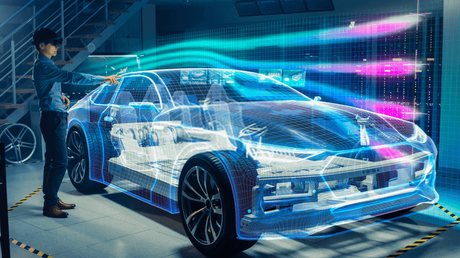
Electric cars function by plugging into a charge station and taking electricity from the electric grid. They store electrical energy in rechargeable batteries that power an electric motor, which turns the wheels. Electric cars accelerate faster than vehicles with customary fuel engines and so, they feel lighter to drive. Electric vehicles are smart and uses latest technologies to ensure a safe and comfortable drive.
In general, electric vehicles consist of 4 main parts. The first part is rechargeable electric batteries (energy storage), the second part consists of electrical motors, the third component is the inverter and the fourth key component is the energy controller. Let’s explore the parts in details!
#1 Rechargeable Electric Batteries
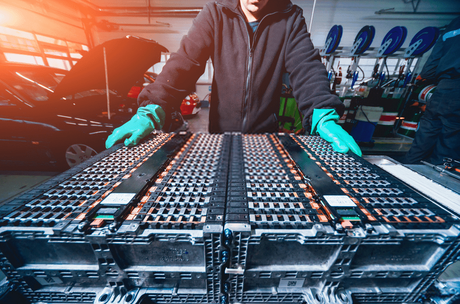
Electric batteries as the name suggests, they store electrical energy and are designed to be rechargeable for continued usage. Chemical batteries are most often used which are placed inside the electric cars. Electrical motor is used instead of engines. Electrical motor gets energy from electric batteries which are usually charged through common electricity supply in our homes. No other type of fuel like petrol or diesel is used in the case of electric cars.
Learn more about: How a Car Battery Works?
However, there is another vehicle technology called ‘Hybrid Vehicles’, which use electric batteries along with other form of gasoline energy (utilize more than one energy sources). Electric Vehicle utilizes four different types of batteries: Lithium Ion (Li-Ion), Molten Salt (Na-NiCl2), Nickel Metal Hydride (Ni-MH) and Lithium Sulphur (Li-S), all of them having the same electric energy storage capacity. Recently Tesla, the electric vehicles pioneer company said to develop a battery that lasts a million mile for its electric vehicles. The electric car batteries can contribute to smart grid by supplying energy back to the smart grid in peak hours.
EVs (Electric Vehicles) have minimal emission of gases. Therefore, EVs doesn’t have emission pipes as compared to gasoline powered cars. However, minimal amount of gases are produced through heating which usually depends on the source type of electricity generation to recharge the vehicle.
If electric cars are recharged through electricity which is generated by renewable source of energy (green energy), there will be zero emission of contaminant gases.
#2 Electric Motors
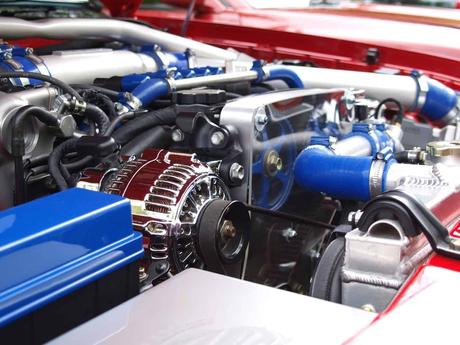
We find electric motors in most of the electrical appliances in our homes. The working principle of electric motors is simple to understand. Basically, motors convert electrical energy to the mechanical energy. In electric cars, motors are usually AC (Alternating Current) or DC (Direct Current) type. Motors gets electric energy from electrical batteries. In turn they provide mechanical energy output (torque) directly to the wheels of the vehicle.
#3 Inverter

The stored electrical energy in the batteries is in the form of direct current or in short called DC supply. However, most of the motors in EVs needs electrical energy in the form of AC (alternating current). Therefore, an inverter is used in the motors to convert DC supply into AC supply which is the main function of an inverter.
#4 Energy Controller
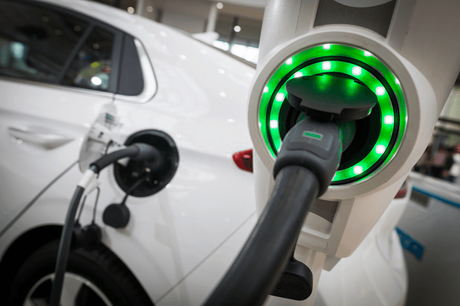
The control and management of energy is very important inside EVs. Main function of an energy controller is to manage and save the electrical power thus reducing the energy wastage. It senses the car’s acceleration from the driver and thus controls the working of motor. Whenever the car stops on traffic signals or in case of traffic jam the motor working is stopped by the energy controller. Thus making sure you can go more distances using the energy stored in your car’s batteries.
In addition to the chemical batteries, there is another technology being used in the form of fuel cells batteries. In that case, the energy in hydrogen fuel is converted into electrical power which is supplied to the electric motors to run the wheels of the vehicle. It further reduces the emission of CO2 gases.
The Future of Automobiles is Electrical
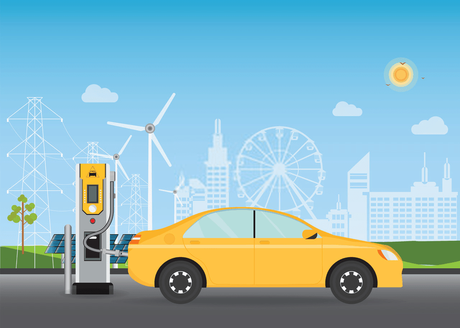
The trend of using electrical vehicles is growing rapidly. Many countries have been offering lucrative offers to install electrical charging stations instead of traditional gasoline fuel stations. The key advantage of using EVs is that they cause very less amount of carbon gases emissions to the environment. As far as the cost is concerned, it is still expensive to purchase, though the running cost of electrical vehicles is far less than that of the fuel engine vehicles. World’s biggest and popular automobile companies are stepping into the world of electric vehicles.
Electric vehicles, trucks, and buses promise to be the future of transportation. The use of electric vehicles, trucks, and buses is on the rise. And that’s good, since nearly most of the climate-damaging emissions come from transportation, for example, 30% of climate-damaging emissions in the UK come from transportation sector. The future of automobiles and transportation is electric!

